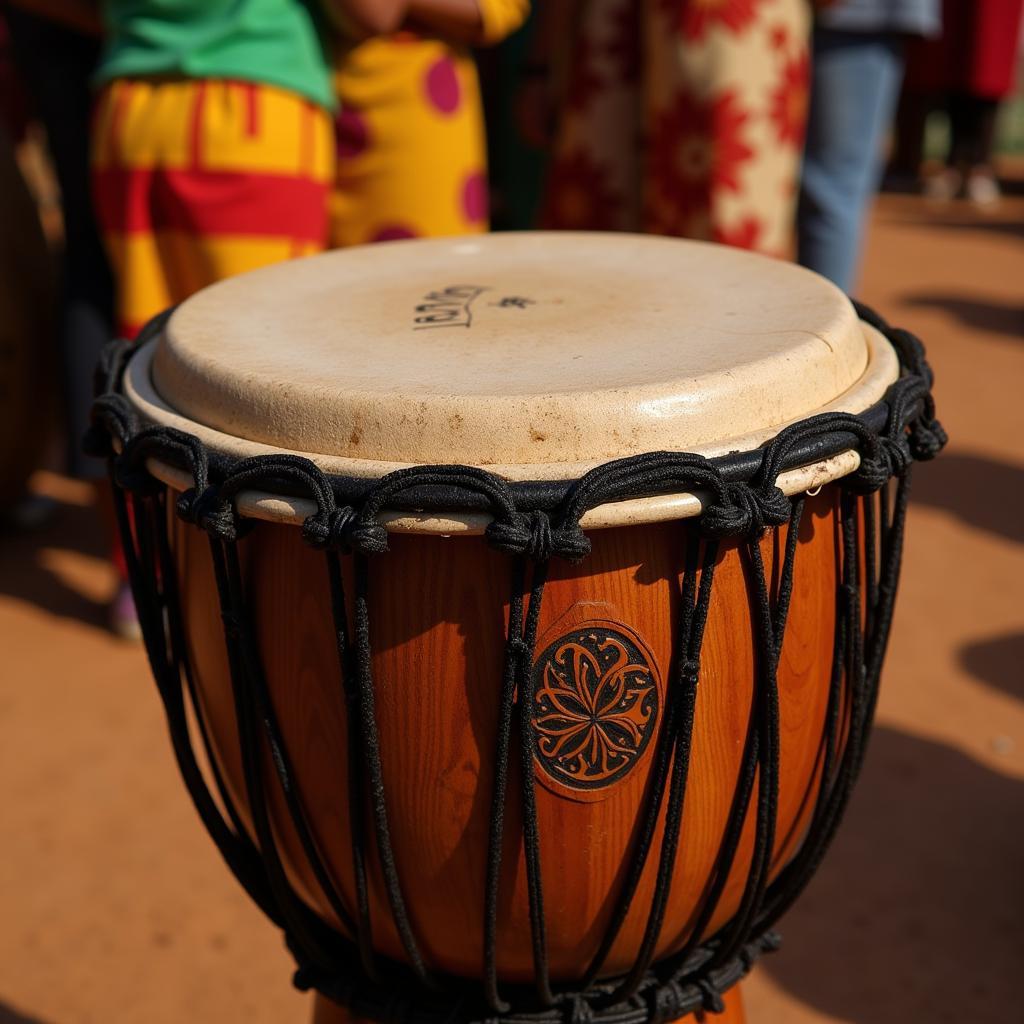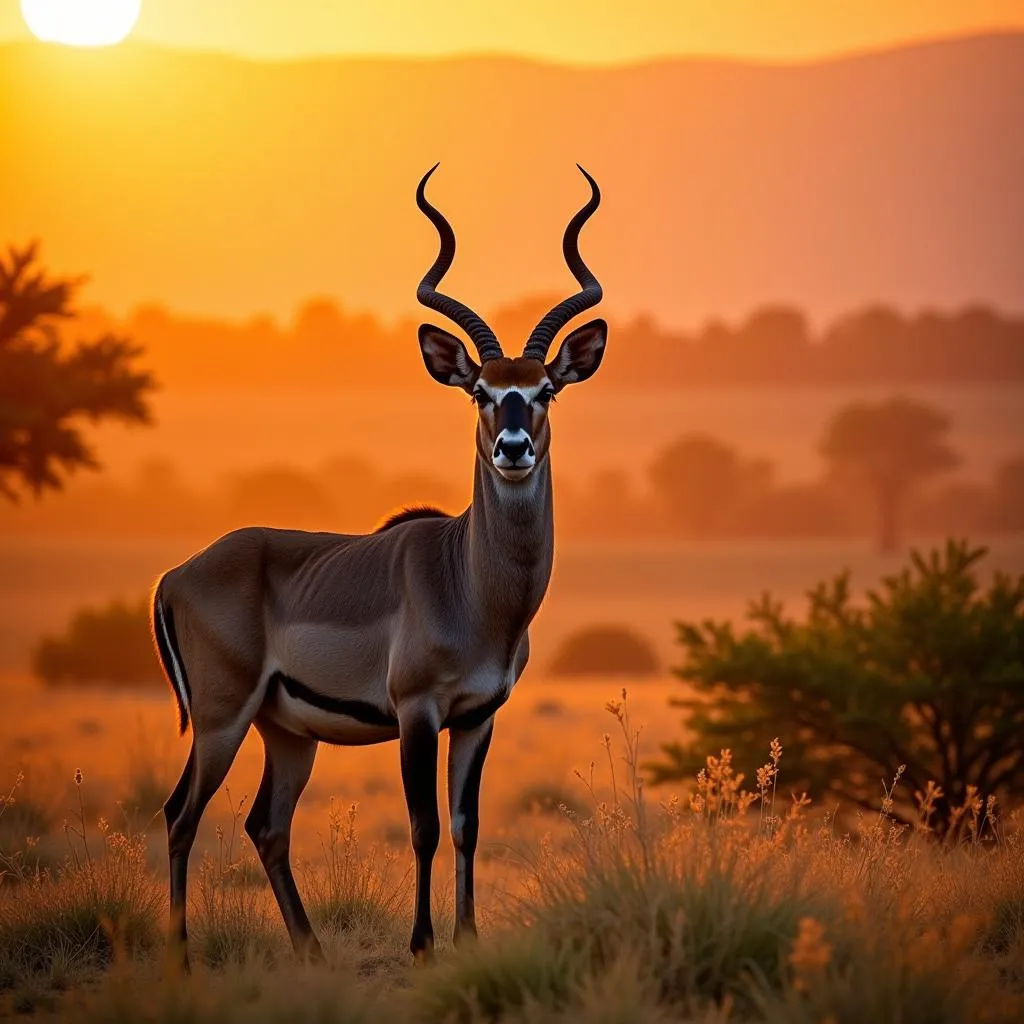Exploring the Sounds of Africa: 3 African Instruments
Africa, a continent pulsating with rhythm and melody, boasts a rich tapestry of musical traditions. From the bustling marketplaces to tranquil villages, music is integral to African Life. This article delves into the captivating world of 3 African Instruments, showcasing their unique sounds and cultural significance.
The diversity of African music is reflected in the vast array of instruments used across the continent. These instruments, often crafted from natural materials, produce sounds that evoke a powerful connection to nature and ancestral spirits. Whether it’s the resonant beat of drums, the melodic twirls of a stringed instrument, or the soothing hum of a wind instrument, each sound tells a story. Let’s embark on a journey to discover the magic of 3 African instruments that have shaped the continent’s musical landscape. You might be surprised to find out how much more there is to African music than you previously thought! Have you ever heard of the African Charter Journalists? They have covered some fascinating stories about music and culture on the continent. african charter journalists
The Djembe: Heartbeat of West Africa
The djembe, a goblet-shaped drum originating from West Africa, is perhaps one of the most recognizable African instruments globally. Carved from a single piece of hardwood and topped with a stretched animal skin, the djembe produces a wide range of tones, from deep bass to sharp slaps. Its versatility allows it to be played solo or as part of an ensemble, driving rhythmic patterns that accompany traditional ceremonies, dances, and storytelling.
The Djembe’s Cultural Significance
The djembe’s significance extends beyond its musical function. It is a symbol of unity and community, bringing people together through shared rhythms and celebrations. Traditionally, the djembe was played by griots, storytellers who preserved and transmitted history and cultural knowledge through music and oral traditions.
The djembe’s popularity has transcended geographical boundaries, finding its way into contemporary music genres and becoming a beloved instrument for percussionists worldwide. Its captivating sound and infectious rhythms continue to resonate with audiences, bridging cultural divides and fostering a sense of global community.
 Djembe West African Drum – A close-up view of a djembe drum, showcasing the intricate carvings on its wooden body and the taut animal skin head. The background hints at a vibrant West African setting, perhaps a marketplace or a traditional ceremony.
Djembe West African Drum – A close-up view of a djembe drum, showcasing the intricate carvings on its wooden body and the taut animal skin head. The background hints at a vibrant West African setting, perhaps a marketplace or a traditional ceremony.
The Kora: A Bridge Between Worlds
The kora, a 21-stringed harp-lute from West Africa, is a testament to the region’s rich musical heritage. Its unique design, featuring a calabash gourd resonator covered with cowhide, produces a mesmerizing blend of harp-like plucking and lute-like resonance. The kora’s sound is often described as ethereal and enchanting, captivating listeners with its complex melodies and intricate rhythms.
The Kora’s Role in Storytelling
Similar to the djembe, the kora has historically been played by griots, who used its captivating sound to accompany their narratives and transmit cultural knowledge across generations. The kora’s music often intertwines with storytelling, adding emotional depth and enhancing the narrative’s power.
The African Commission on Human and Peoples’ Rights Regional Organizations plays a vital role in preserving and promoting cultural heritage, including musical traditions like those associated with the kora. african commission on human and peoples rights regional organizations The kora’s enduring legacy is a testament to the power of music to connect us to our past and inspire future generations.
The Mbira: The Thumb Piano’s Enchanting Sound
The mbira, also known as the thumb piano, is a small, handheld instrument found in various forms across Africa. Its metal tines, mounted on a wooden soundboard, are plucked with the thumbs, producing a delicate, metallic sound. While simple in construction, the mbira is capable of creating complex melodies and rhythmic patterns, often accompanied by singing and other instruments.
The Mbira in Spiritual Traditions
The mbira holds a significant spiritual role in many African cultures. It is often used in religious ceremonies, rituals, and healing practices, believed to connect the living with the ancestral world. The mbira’s mesmerizing sound is thought to evoke a trance-like state, facilitating communication with spirits and promoting healing.
Have you ever considered the power of African drums? african drums png The mbira, like other African instruments, continues to evolve and adapt, finding its place in contemporary music and inspiring new generations of musicians.
African folk songs often feature instruments like the mbira, carrying stories and traditions through generations. african folk songs choir The mbira’s unique sound continues to captivate and inspire, preserving its cultural significance in a constantly evolving world. Perhaps surprisingly, even the African Grey Parrot has shown an affinity for music, with its remarkable talking ability allowing it to mimic melodies and rhythms. african grey talking ability
Conclusion
These 3 African instruments, the djembe, the kora, and the mbira, offer a glimpse into the vast and vibrant musical landscape of Africa. Their unique sounds, deeply rooted in cultural and spiritual traditions, continue to resonate with audiences worldwide. Exploring these instruments is an invitation to embark on a journey of discovery, appreciating the richness and diversity of African music and its enduring power to connect us to the human spirit. Learning about 3 African instruments not only expands our musical knowledge but also fosters a deeper understanding and appreciation of African culture.
FAQ
- What is the most common African drum? The djembe is arguably the most recognizable African drum globally.
- How many strings does a kora have? A kora typically has 21 strings.
- What is the mbira also known as? The mbira is also known as the thumb piano.
- Where did the djembe originate? The djembe originated in West Africa.
- What is the cultural significance of the kora? The kora is often used by griots to accompany storytelling and transmit cultural knowledge.
- What is the spiritual significance of the mbira? The mbira is often used in spiritual ceremonies and healing practices.
- Are these instruments still used today? Yes, these instruments are still used today in both traditional and contemporary settings.
Need More Information?
Explore more fascinating topics related to African culture and traditions. Discover the beauty of African art, the diversity of its languages, and the intricacies of its social structures. Delve deeper into the world of African music and explore other instruments such as the balafon, the talking drum, and the ngoni.
Contact us for assistance. Call: +255768904061, Email: [email protected] Or visit: Mbarali DC Mawindi, Kangaga, Tanzania. Our customer service team is available 24/7.


